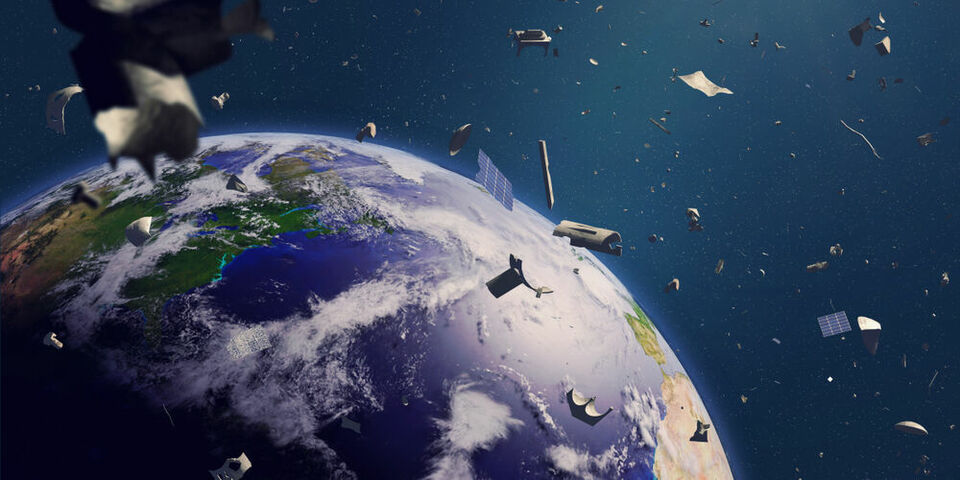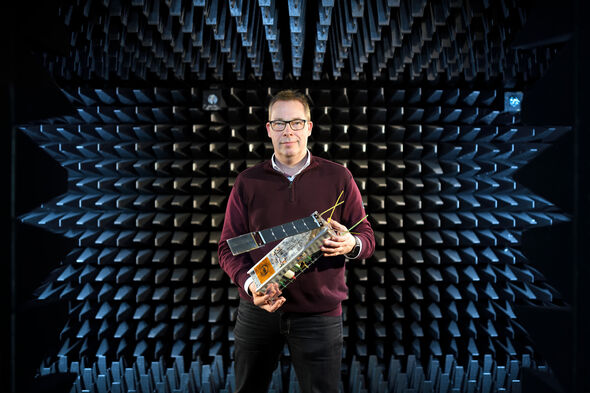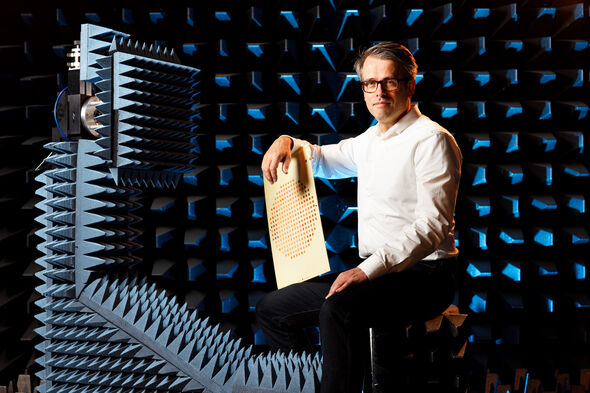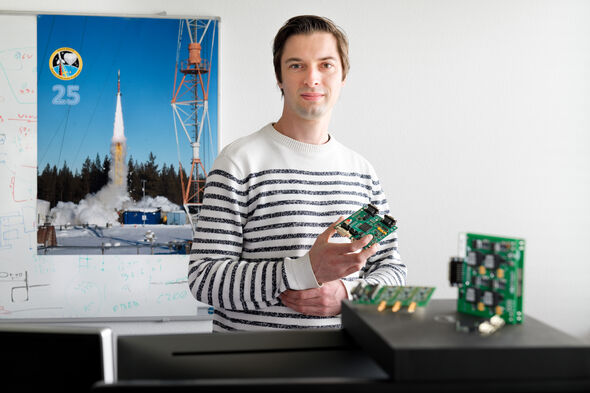Proftalk | "Let’s make sure there actually is space in space"
Besides the growing waste mountain on earth, we also leave our traces in space. Space debris - discarded material from space missions, defective parts and derelict satellites - is starting to become a major problem now that several hundred thousands of bits of debris orbit around Earth at enormously high speeds. The increasing number of satellites and the deliberate creation of debris by countries such as China and India certainly do not make space any less crowded. TU/e experts Mark Bentum, Bart Smolders and Mark Wijtvliet talk about cleanup nets and alternatives to satellites.
Since the launch of the world’s first artificial moon in 1957 - the Sputnik 1 - space has become more crowded with each new space mission and satellite launch. Because pieces of spacecraft, old satellites, rocket stages, bolts and flecks of paint endlessly orbit our planet. The lack of friction in the higher layers prevents these bits of debris from moving towards Earth where they would burn up upon entering the atmosphere. And with a speed of about eight kilometers per second even a fleck of paint might cause a serious collision, leading to more space debris.
“That’s known as the Kessler effect,” says full professor of Radio Science Mark Bentum. “More pieces of debris lead to more collisions, which in turn leads to more debris and more collisions, and before you know it, space travel becomes impossible. We haven’t reached that point yet, but we need to take action.”
Cleanup actions
So we need to clean up. Several initiatives are under way - innovator Daan Roosegaarde recently drew attention to his Space Waste Lab -, but can’t we tackle the problem at its root? Bentum: “Agencies in Europe and the US are required with each new launch to make public what will happen to a satellite at the end of its life span. And the launching rocket that breaks apart along the way may cause as little debris as possible. But does that apply to China and India as well? With its anti-satellite missile test last week, India proved with much display of power that they are able to destroy satellites. That wasn’t a very smart move, to put it mildly. Now thousands of pieces of extra debris are floating around that could possibly endanger international space station ISS.”
Critical approach
According to full professor of telecommunication Bart Smolders we need to take a much more critical approach to the use of satellites. “More and more parties are in the process of launching satellites into space. Take Amazon for example, they have just announced their plan to launch 3,200 satellites. Several other consortiums have similar plans, and it won’t be long before we have tens of thousands of satellites floating over our heads.”
What is different about these commercial satellites is that they orbit Earth at a lower altitude, the so-called Low Earth Orbit (LEO), compared to satellites in geostationary orbit, Smolders explains.
“Because these satellites are closer to Earth, users require smaller antennas, and they are more user-friendly and much cheaper as well. But a geostationary satellite can cover the entire continent of Europe, whereas you need a swarm of LEO satellites to achieve that same coverage. Consequently, space becomes more crowded. Do we want this to happen? I believe it’s time for society to limit the use of satellites for purely commercial purposes. Let’s use satellites only when there is no alternative. We can do more and more with wireless networks, fiber optics, photonics. We’re also working very hard on this at TU/e. You don’t need a satellite for everything.”
Graveyard Orbit
Current satellites need to be disposed of neatly, and in order to gain more information about a satellite’s life span, PhD student Mark Wijtvliet (Electronic Systems) took part in the REXUS rocket launch in Sweden last month.
A team of researchers of TU/e and the Radboud University of Nijmegen conducted several tests, including one on low-cost radiation sensors. Wijtvliet: “A satellite’s life span largely depends on the electronics inside, which is highly sensitive to space radiation. Measuring that radiation allows us to estimate how long electronics can remain functional before a satellite can no longer be operated. This makes it possible to safely bring back a satellite into Earth’s atmosphere.” Bentum adds: “Or to steer it toward the graveyard orbit. It’s reasonably stable to put something there, better than to have it circle around aimlessly.”
Strict requirements, choice of materials, and clearly defined protocols seem to be reasonably effective means of reducing space debris. Wijtvliet believes, as do the two full professors, that the focus should lie on actively cleaning up debris that is currently orbiting Earth. “The ESA and NASA are working on technologies to capture space debris with nets and harpoons, or to shoot it away with lasers. There are a number of initiatives.”
TU/e is indirectly involved in this process through the Swiss ClearSpaceOne project. Our university contributes to the way the cleanup satellite will navigate through space, with a gripping mechanism that will be used to bring back debris into Earth’s atmosphere. And who knows what the new Center for Astronomical Instrumentation, initiated by Mark Bentum, will produce. “One way or another, let’s make sure there actually is space in space.”
Music in space
The Minimal Music Festival, which was held in Amsterdam last week, was officially opened with the world premiere of Space Junk, a composition by Kate Moore. The composer and her father, physicist Chris Moore, want to draw attention to the problem of space debris.





Discussion